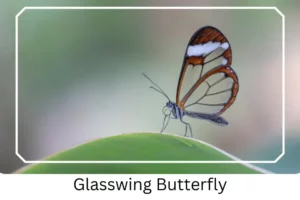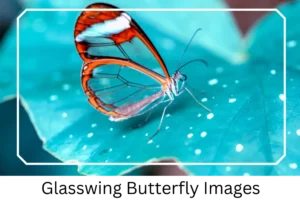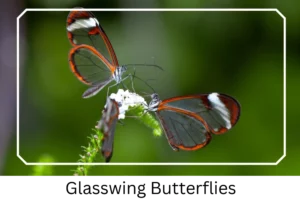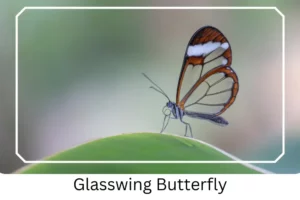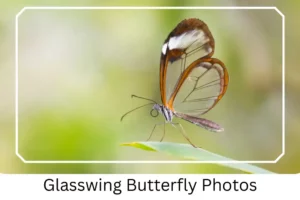Glasswing (Greta oto)
The Glasswing butterfly, with its ethereal beauty, has captivated the hearts of many. Known scientifically as Greta Oto, these unique insects boast wings that are almost completely transparent, allowing them to blend seamlessly into their surroundings. This natural camouflage makes them a marvel of the insect world and a subject of fascination among scientists and butterfly enthusiasts alike.
Scientific Classification
- Family: Nymphalidae
- Genus: Greta
- Common names: Glasswinged Butterfly
- Scientific Name: Greta oto
Overview
Native to the dense forests of the Americas, Glasswings lead a migratory lifestyle, capable of covering impressive distances of up to 19 kilometers per day at speeds reaching 13 kilometers per hour. Their transparency, coupled with their migratory habits, renders them elusive, making each sighting a rare and cherished event. Despite their delicate appearance, these butterflies are robust creatures, enduring the challenges of their migratory paths with remarkable resilience.
Description and Identification
Caterpillar
The larval stage of the Glasswing presents a striking appearance with its green body adorned with vibrant purple and red stripes. Its cylindrical shape is accented with dorsal projections, which are softened by filaments that lend a reflective quality to the caterpillar, aiding in its defense against predators by rendering it nearly invisible.
Pupa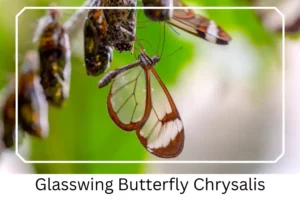
As it transitions into adulthood, the Glasswing enters the pupal stage, encased in a chrysalis of silver. This chrysalis is suspended from the undersides of leaves by a silk pad, where it remains hidden from potential threats until the butterfly is ready to emerge.
Adult Butterfly
Upon reaching maturity, the Glasswing butterfly exhibits no sexual dimorphism, making males and females virtually indistinguishable from each other. Their wings, when open, display minimal coloration with opaque borders in shades of dark brown, enriched by hints of red or orange. This color scheme remains consistent when the wings are closed, maintaining the butterfly’s subtle beauty regardless of its state.
Sexual Dimorphism: Not present
Color and Appearance: Wings display minimal coloration with opaque borders when open; identical coloration when closed.
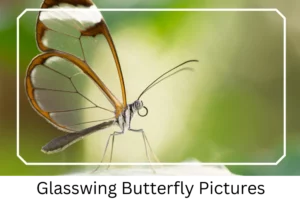
 Average Wingspan: 5.6 to 6.1 cm (2.2 to 2.4 in)
Average Wingspan: 5.6 to 6.1 cm (2.2 to 2.4 in)
Flight Pattern: Moderate speed
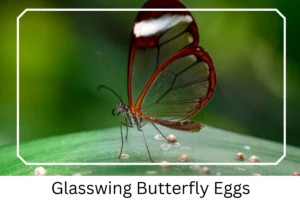
Glasswing Butterfly Eggs
Eggs
The beginning of a Glasswing’s life is marked by the laying of white, cylindrical eggs, meticulously placed one at a time on the underside of leaves, ensuring the next generation’s survival.
Quick Facts | |
| Distribution | Common from Central to South America, reaching as far south as Chile. |
| Habitat | Exclusively found in tropical rainforests. |
| Lifespan of Adults | 6 to 12 weeks. |
| Host Plants | Prefers poisonous species from the genus Cestrum. |
| Adult Diet | Nectar from over 150 flower species, mainly from the genus Lantana; also consumes flowers and bird droppings. |
How to Identify Glasswing Butterfly?
Identifying a Glasswing butterfly amidst the lush foliage of its rainforest home is a thrilling challenge. Look for the distinctive transparent panels of its wings, bordered by dark brown, with occasional flashes of red or orange. The lack of sexual dimorphism means that both male and female butterflies share these traits, making size and color unreliable indicators. Instead, focus on the wing structure and the unique, almost invisible appearance against the backdrop of green leaves and sunlight. Glasswings often frequent flowers for nectar, particularly those from the Lantana genus, so these areas can be hotspots for sightings. Patience and keen observation are key, as their elusive nature and camouflaging abilities make them a rare find, even in their native habitats.
Did You Know?
- The caterpillar stage consumes toxic plants, making it poisonous as a defense mechanism against predators.
- In Spanish-speaking regions, these butterflies are affectionately called “espejitos,” meaning ‘little mirrors,’ a nod to their transparent wings.
- Despite their delicate appearance, Glasswings are incredibly strong, capable of carrying up to 40 times their body weight.
- Glasswing butterflies contribute to the pollination of many plant species, playing a vital role in the health of their ecosystems.
Conclusion
The Glasswing butterfly stands as a testament to nature’s ingenuity, combining resilience with ethereal beauty. Its life cycle, from the vibrant caterpillar to the transparent-winged adult, showcases evolution’s creative solutions to survival. These butterflies not only mesmerize with their appearance but also play crucial roles in their ecosystems.
Glasswing Butterfly Pictures

Scientific Classification

- Family: Nymphalidae
- Genus: Greta
- Common names: Glasswinged Butterfly
- Scientific Name: Greta oto

